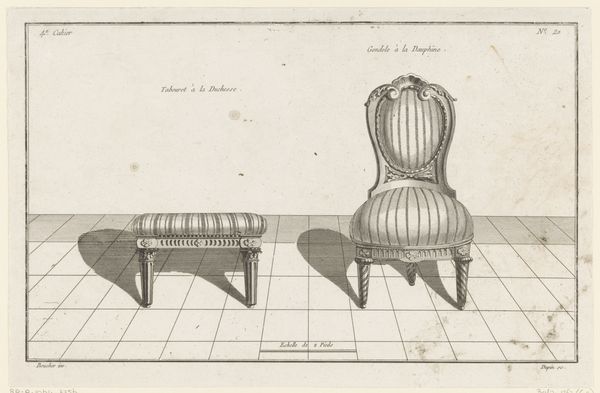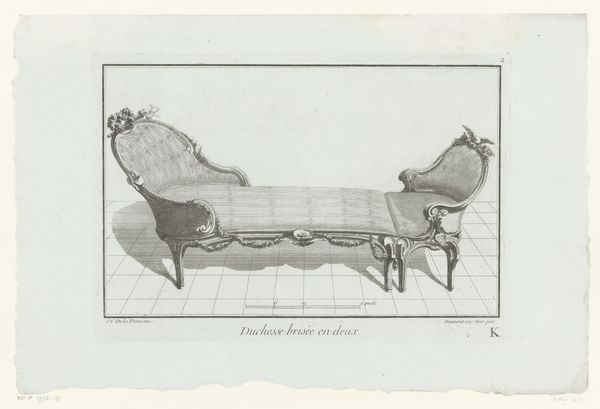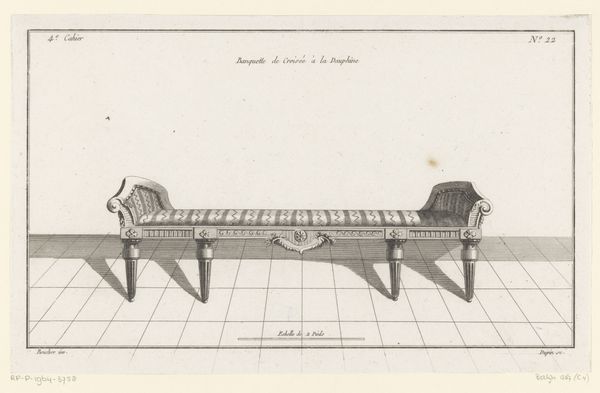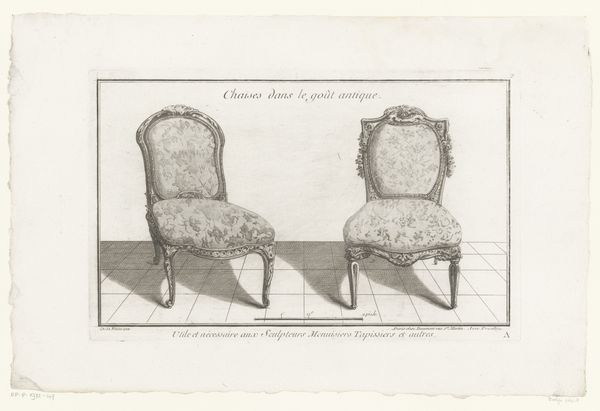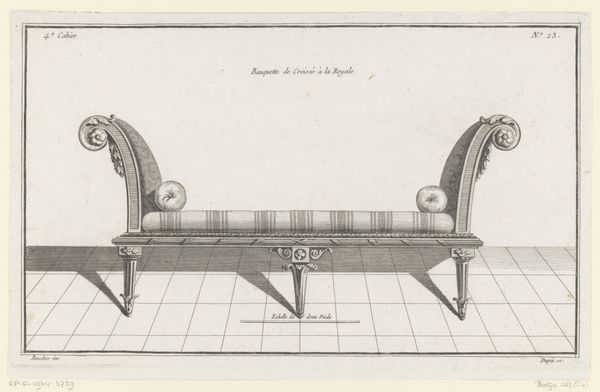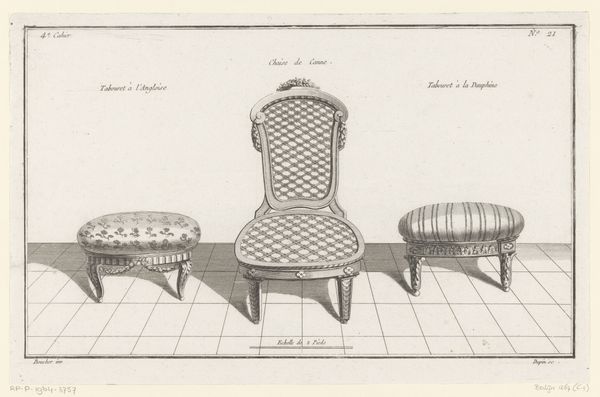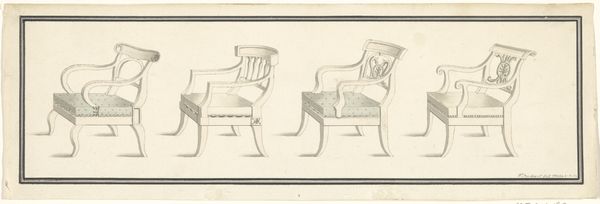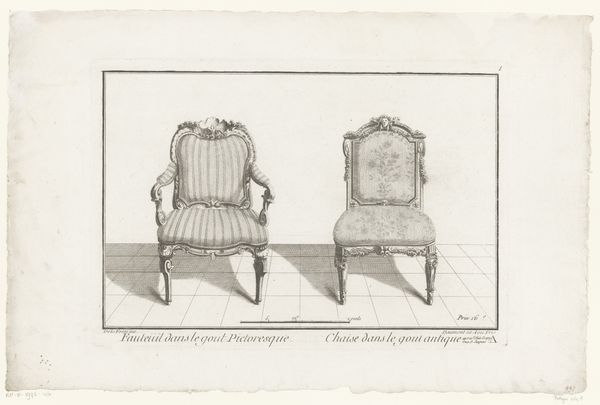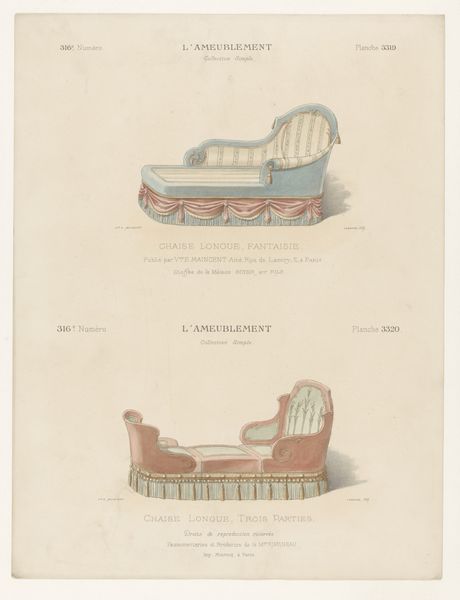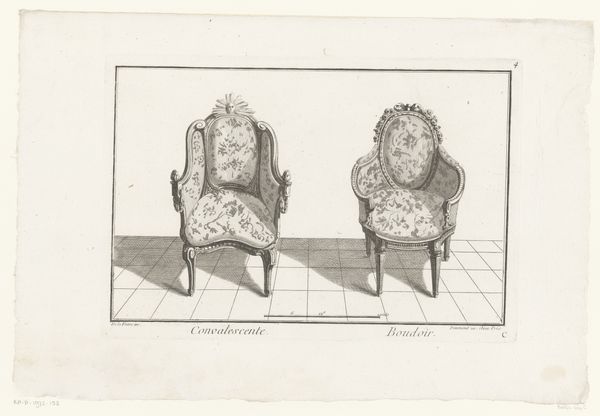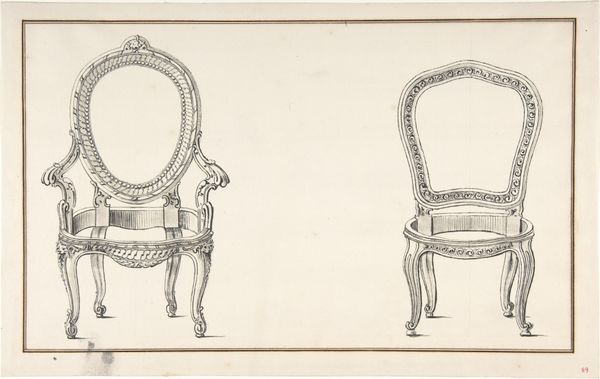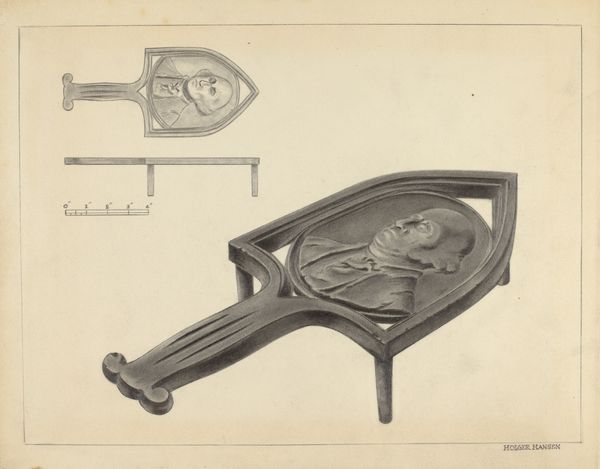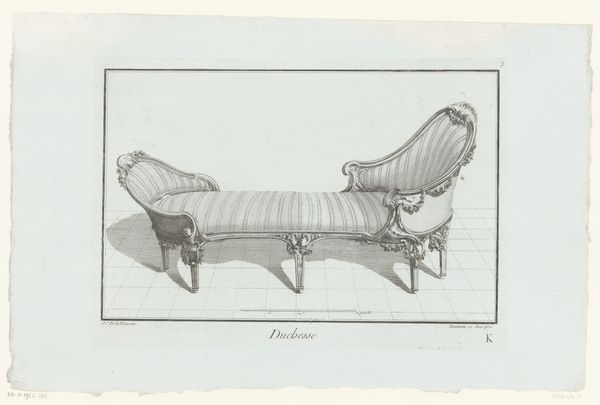
drawing, print, engraving
#
drawing
#
neoclacissism
#
aged paper
#
toned paper
#
light pencil work
# print
#
pencil sketch
#
old engraving style
#
sketch book
#
personal sketchbook
#
geometric
#
pen-ink sketch
#
line
#
sketchbook drawing
#
pencil work
#
decorative-art
#
engraving
Dimensions: height 201 mm, width 329 mm
Copyright: Rijks Museum: Open Domain
Curator: Here at the Rijksmuseum, we're looking at "Twee kleine baden," or "Two Small Baths," a drawing likely made between 1772 and 1779. It is by Nicolas Dupin. Editor: My first impression? Utterly charming! It's delicate, precise, and has this quiet, contemplative air, like eavesdropping on a very chic interior design meeting from the past. Curator: Indeed. What we see here is an engraving, and print, exemplifying Neoclassical ideals—clarity, order, and a fascination with antiquity all packaged neatly onto toned paper. These were revolutionary concepts within the decorative arts and wider European cultures! Editor: Right, revolution in the bathtub, eh? I love the lines and geometric precision. The aged paper almost feels like a map, maybe charting out not just forms, but how design reshaped daily life! It gives you something to dream with, it has soul! Curator: It certainly reflects shifting attitudes. These designs hint at new concerns for privacy, comfort, even luxury associated with bathing during the period. Bathing moved into the home, it was no longer such a public act. And objects that make us at ease were becoming much more common in that era. Editor: Totally! You've got the practical sketch but the way the light catches these improbable tubs-- it brings some kind of humor in its perfect rendering! Imagine sinking into that chaise longue…all that is missing is someone drawing me as I relax! Curator: That kind of domesticity, that ability to visualize oneself within a composed space… it's exactly the goal of this image. It encourages a different relationship with the object! Editor: See, I felt that almost instantly! Curator: The visual representation democratizes access too. This piece allows for distribution through books of this picture; you didn't have to be in proximity of actual models for consumption or purchase; this becomes transformative when access expands and consumption changes. Editor: Whoa. Curator: Yes! The "old engraving style" is not an aesthetic choice solely but is at once connected with these possibilities. Thank you for this wonderful exchange, where feeling becomes intellectual rigor and historic understanding is deepened. Editor: Anytime. Thanks, it really gave me a nice sense for the real significance of this.
Comments
No comments
Be the first to comment and join the conversation on the ultimate creative platform.
